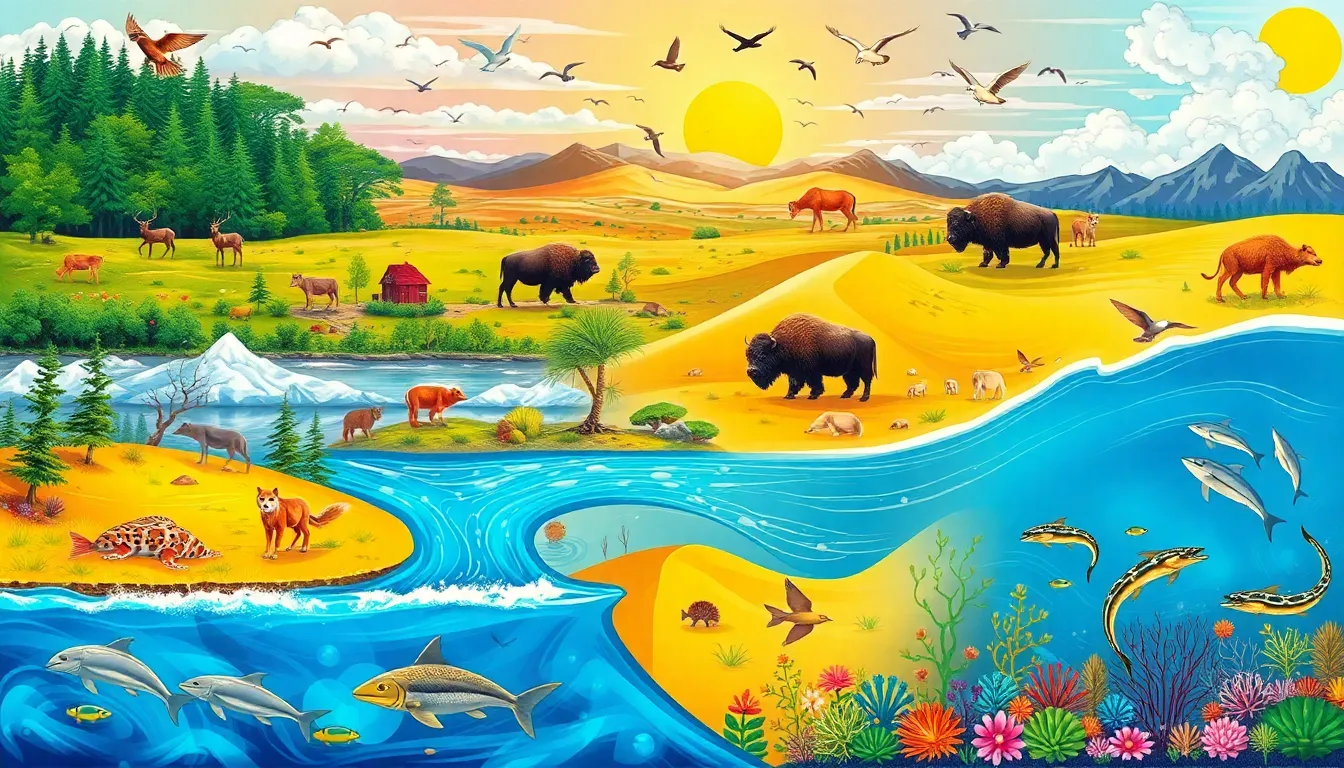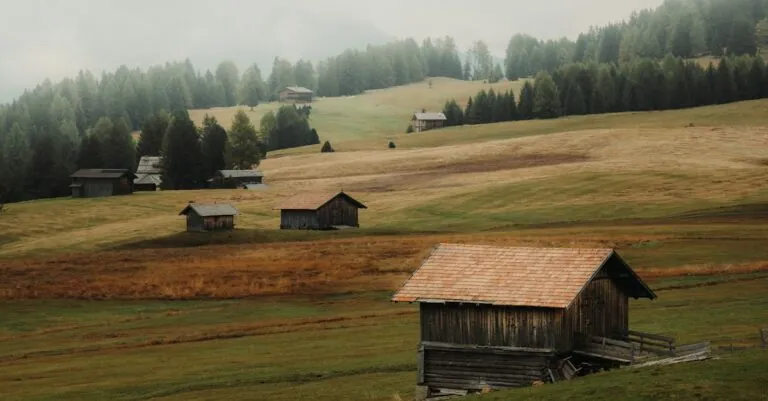Every kid loves animals, but have they ever wondered where these furry, scaly, or feathered friends call home? From the icy realms of the Arctic to the lush jungles of the Amazon, animal habitats are as diverse as the creatures that inhabit them. Understanding these habitats not only sparks curiosity but also fosters a sense of responsibility for the planet.
Table of Contents
ToggleOverview of Animal Habitats for Children
Animal habitats provide a unique opportunity for children to learn about the diverse environments where different species thrive. Each habitat presents specific characteristics crucial for the survival of its residents. For instance, deserts, with their arid conditions, support animals like camels and lizards, well-adapted to extreme heat and limited water.
Forests, on the other hand, foster a rich biodiversity, containing creatures such as deer, bears, and countless insect species that play vital roles in their ecosystems. Rainforests present another fascinating contrast, showcasing vibrant flora and fauna, including monkeys and colorful birds, that depend on high humidity and ample rainfall.
Oceans also deserve attention, covering more than 70% of the Earth’s surface. They host a wide array of marine life, from tiny plankton to massive whales, all adapted to different depths and water conditions.
Children can deepen their understanding of these habitats through guided activities and educational programs designed to encourage exploration. Engaging with interactive exhibits at zoos or aquariums allows them to observe animals in settings similar to their natural environments.
Educational resources, such as books and documentaries, provide additional insights into the distinct traits of various ecosystems. Recognizing how these habitats connect to global health fosters empathy and a sense of stewardship. Developing an appreciation for animal habitats ultimately inspires children to advocate for conservation efforts and responsible environmental practices.
Types of Animal Habitats
Animal habitats exist in various forms, each supporting unique ecosystems. Understanding these habitats helps children appreciate the diversity of wildlife.
Terrestrial Habitats
Terrestrial habitats include forests, grasslands, deserts, and tundra. Forests provide shelter for animals like deer, bears, and numerous bird species. Grasslands support grazing animals such as bison and antelope. Deserts challenge inhabitants like camels and snakes to adapt to extreme conditions. Tundra, characterized by low temperatures and permafrost, hosts resilient species like Arctic foxes and migratory birds.
Aquatic Habitats
Aquatic habitats comprise freshwater environments like rivers and lakes, as well as saltwater oceans. Rivers and lakes house animals such as fish, frogs, and otters. Oceans cover over 70% of the Earth’s surface and are home to diverse marine life like dolphins, whales, and colorful coral reefs. Each aquatic habitat plays a crucial role in maintaining environmental balance, offering a unique space for species to thrive.
Aerial Habitats
Aerial habitats primarily include the skies and treetops where birds and insects reside. Birds like eagles and hummingbirds navigate these spaces, displaying various adaptations. Insects, often overlooked, also inhabit aerial areas, serving vital roles in pollination and food chains. Understanding these habitats enriches children’s knowledge of the interconnectedness of life forms and ecosystems.
Importance of Learning About Animal Habitats
Learning about animal habitats enhances children’s understanding of the world. They gain insights into the environments where wildlife thrives, promoting empathy toward living creatures.
Environmental Awareness
Environmental awareness begins with recognizing various animal habitats. Children learn how different ecosystems function, including forests, deserts, and oceans. These ecosystems demonstrate the interdependence of species and their environments. Understanding these relationships fosters a sense of responsibility in children to protect and preserve wildlife. For instance, knowing that rainforests are vital for maintaining global climate stability highlights the importance of conservation in these regions. Educators can utilize hands-on activities to spark discussion about local wildlife, empowering children to engage with their surroundings actively.
Conservation Efforts
Conservation efforts play a crucial role in safeguarding animal habitats. Children, when educated about endangered species and threatened ecosystems, become advocates for biodiversity. They can explore initiatives like wildlife reserves and community clean-up programs. Participating in local conservation projects contributes to tangible changes, such as habitat restoration and pollution reduction. Highlighting success stories, like the recovery of the American bald eagle, inspires hope and a commitment to environmental stewardship. Schools can incorporate visits to national parks and nature centers, reinforcing the importance of protecting natural habitats for future generations.
Activities to Explore Animal Habitats
Exploring animal habitats engages children’s curiosity and deepens their understanding of ecology. Several activities can enhance this learning experience.
Interactive Learning Tools
Utilizing interactive learning tools captivates young minds. Apps that showcase different habitats allow children to explore and discover the animals that thrive within them. Virtual reality experiences provide immersive environments where kids can interact with various species in their natural settings. Additionally, educational games can reinforce knowledge about different ecosystems while being enjoyable. These resources enhance retention of information, making learning both effective and fun.
Field Trips and Nature Walks
Field trips and nature walks present real-world learning opportunities. Visiting local parks or wildlife reserves enables children to observe animals in their habitats firsthand. Guided tours often include expert insights on the importance of each ecosystem. Educators can promote activities like birdwatching or plant identification during these outings. Engaging with nature fosters a sense of wonder and responsibility toward environmental conservation. These experiences create lasting impressions, promoting awareness of habitat preservation.
Conclusion
Exploring animal habitats opens up a world of wonder for children. This journey not only nurtures their curiosity but also cultivates a sense of responsibility towards the environment. By understanding the diverse ecosystems that support wildlife, kids become empowered advocates for conservation. Engaging activities like field trips and interactive learning tools can make this exploration even more impactful. As they witness the beauty and complexity of nature, children develop a lasting appreciation for the planet and its inhabitants. This foundational knowledge is crucial for fostering future generations who are committed to protecting Earth’s precious habitats.





